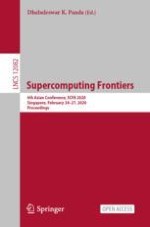Open Access 2020 | Open Access | Buch

Supercomputing Frontiers
6th Asian Conference, SCFA 2020, Singapore, February 24–27, 2020, Proceedings
herausgegeben von: Dhabaleswar K. Panda
Verlag: Springer International Publishing
Buchreihe : Lecture Notes in Computer Science